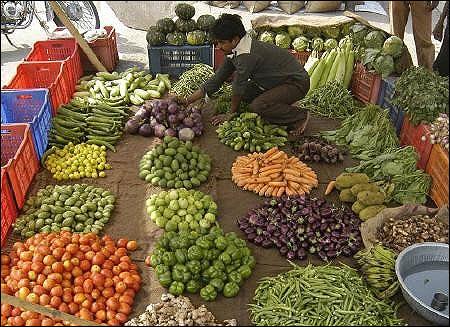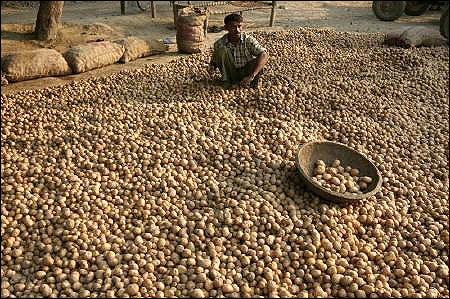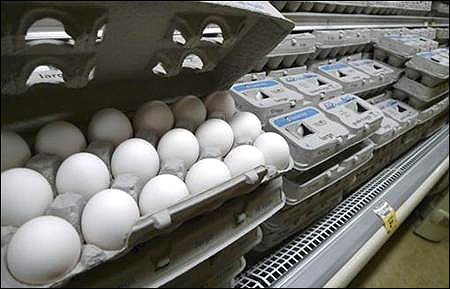 | « Back to article | Print this article |
Food inflation jumps to 11.43%
Food inflation shot up to 11.43 per cent for the week ended October 15 on the back of costlier vegetables, fruits, milk and protein-based items.
Food inflation, as measured by Wholesale Price Index (WPI), stood at 10.60 per cent in the previous week.
The rate of price rise of food items was 14.20 per cent in the corresponding week of 2010.
Click on NEXT for more...
Food inflation jumps to 11.43%
As per data released by the government today, vegetables became 25 per cent costlier, year-on-year basis.
Similarly, Fruits grew dearer by 11.96 per cent, milk by 10.85 per cent and eggs, meat and fish by 12.82 per cent.
Pulses also became dearer by 9.06 per cent and cereal prices were up 4.62 per cent year-on-year.
Click on NEXT for more...
Food inflation jumps to 11.43%
However, onions became 18.93 cheaper. Wheat prices were also down 0.95, and potatoes by 0.45 per cent during the week under review.
As for weekly comparison, inflation in the overall primary articles category was 11.75 per cent for the week ended October 15, compared to 11.18 per cent in the previous week.
Primary articles have over 20 per cent weight in WPI.
Click on NEXT for more...
Food inflation jumps to 11.43%
Inflation in non-food articles, including fibres, oil seeds and minerals, was recorded at 7.67 per cent during the week under review, as against 8.51 per cent in the week ended October 8.
Fuel and power inflation stood at 14.70 per cent during the week under review, compared to 15.17 per cent in the previous week.
Click on NEXT for more...
Food inflation jumps to 11.43%
The upsurge in food prices is likely to exert further pressure on the government and the Reserve Bank to tackle the situation expeditiously.
Headline inflation, which also factors in manufactured items, has been above the 9 per cent mark since December, 2010.
It was 9.72 per cent in September this year.
Click on NEXT for more...
Food inflation jumps to 11.43%
RBI has hiked interest rates 13 times since March, 2010, to tame demand and curb inflation.
In its second quarterly review of the monetary policy earlier this week, the apex bank said it expects inflation to remain elevated till December on account of demand-supply mismatch, before moderating to 7 per cent by March 2012.





